





The Fondation Etrillard is the first sponsor of a three-year project to analyse, restore and exhibit a treasure of our medieval heritage that has left its mark on art history: the Très Riches Heures du duc de Berry.
A veritable icon of the Middle Ages, the Très Riches Heures du duc de Berry is the jewel of the Musée Condé collections at the Château de Chantilly. They are a prestigious manuscript of exceptional artistic quality, refined ornamentation and rich iconography. Painted in France in the 15th century, they form a museum of 131 paintings evoking fairytale castles, princely scenes and the work of the fields to the unchanging rhythm of the seasons.
In accordance with the wishes of its donor, the Duc d’Aumale, the manuscript cannot be exhibited outside the Musée Condé, where, due to its fragility and preciousness, it is usually kept out of sight in a secure location.
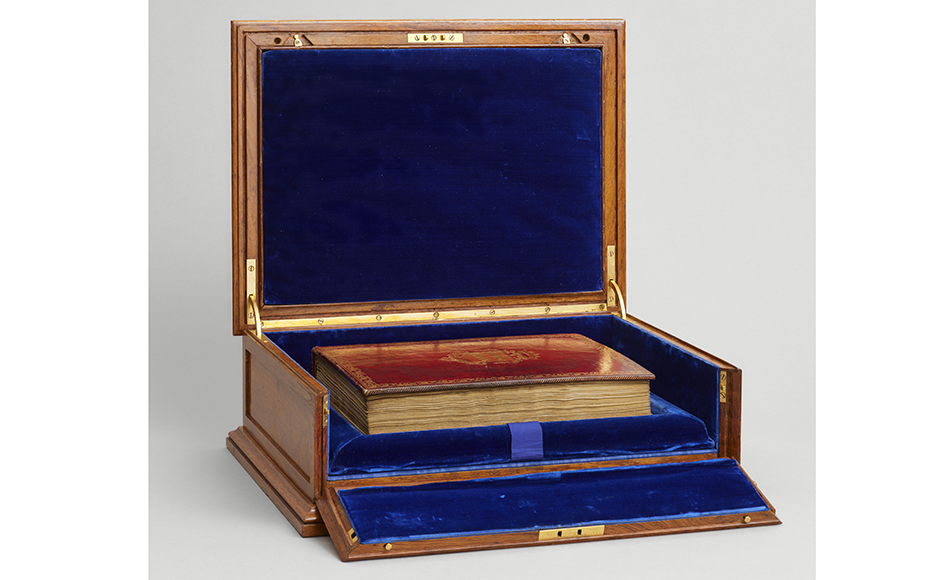
The manuscript box (1867) © RMN – Grand Palais Domaine de Chantilly / Michel Urtado
This illuminated masterpiece was commissioned around 1411 by the great collector and bibliophile Jean, Duke of Berry – third son of King John II of France, known as the Good – to three brilliant illuminators, the Limbourg brothers. It remained unfinished at the death of all those involved in 1416. Throughout the 15th century, other illuminators worked on completing it, including Barthélemy d'Eyck around 1446 for the royal family, and Jean Colombe around 1485 for Charles I of Savoy, who inherited it in turn.
After it was moved to Chantilly and the first reproductions were made by Henri d’Orléans, Duke of Aumale, who purchased it in 1856, this “cathedral book” gained worldwide fame, becoming an iconic work. It still shapes a poetic and idealised vision of the Middle Ages in the collective imagination.
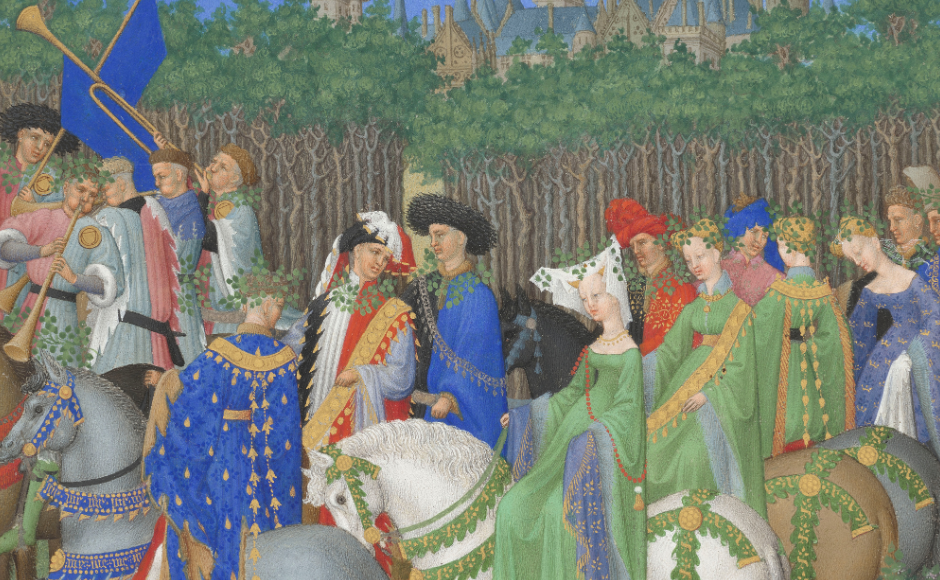
Miniature of the month for May © RMN-Grand Palais / Domaine de Chantilly / Michel Urtado
This book of hours is as famous as it is discreet due to its fragility over time. Suffering from several problems, the manuscript needed to be restored. The Musée Condé therefore wanted to ensure its preservation in the face of signs of deterioration, promote renewed knowledge about the manuscript and showcase a masterpiece so that it can continue to fuel the imagination of future generations.
To meet these challenges, the Musée Condé is supported by major French conservation and research institutions such as the Bibliothèque nationale de France and the C2RMF, and by the Fondation Etrillard, the project's leading sponsor.
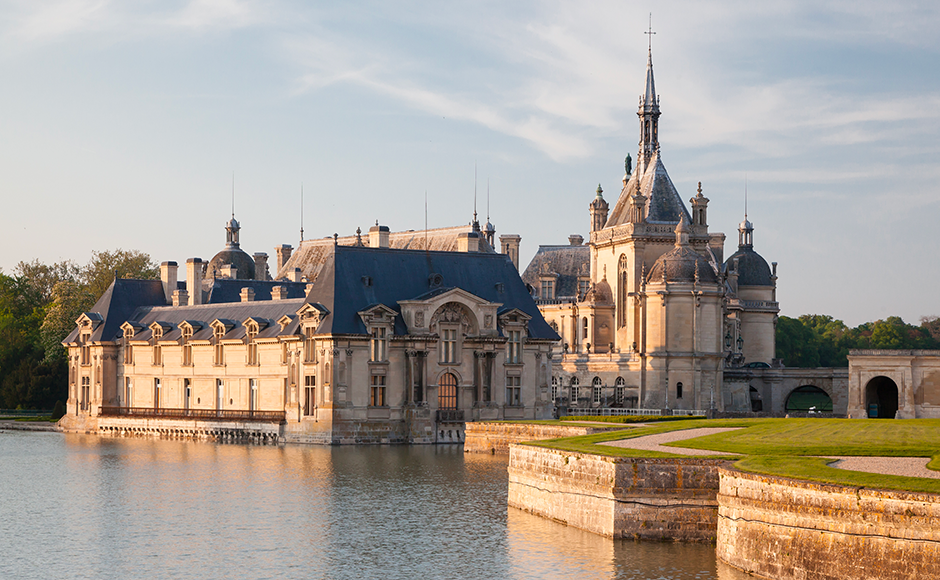
The Chantilly Castle © Sophie Lloyd
The manuscript first spent an exceptional period in the laboratories of the Centre de Recherche et de Restauration des Musées de France (C2RMF) at the Louvre from March to May 2023. There, it benefited from the best imaging techniques and was explored in depth by restorers, who examined the fragile areas to better understand its alterations. This was a first in its history.
This collection of images was then analysed to gain a better understanding of the book's craftsmanship and iconography, particularly the bold brushwork of its painters.
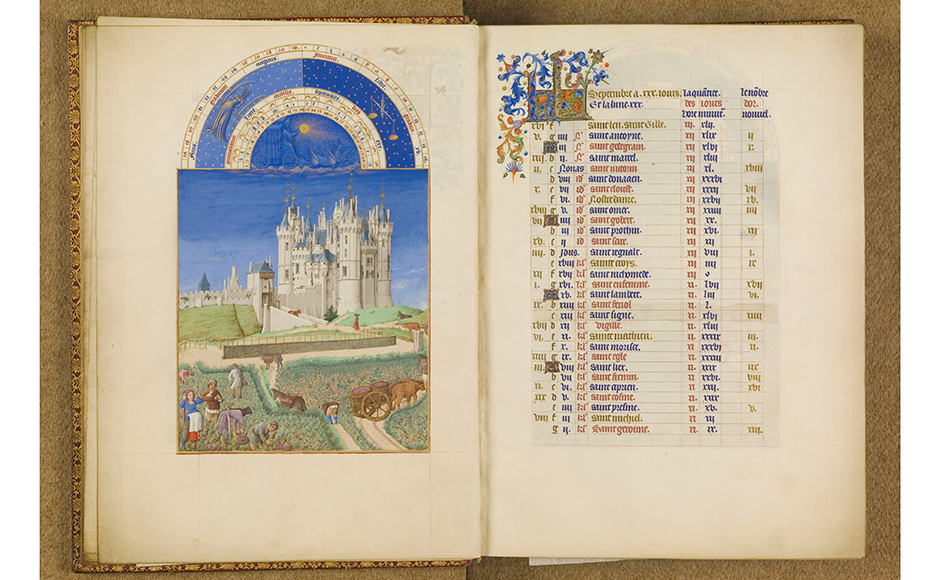
Month of September © IRHT CNRS / Bibliothèque du Château de Chantilly / Gilles Kagan
To conclude this vast project, a special exhibition is held from 7 June to 5 October 2025, showcasing the progress made in researching the manuscript. These horae have only been exhibited twice in the last century, in 1956 and 2024. This exhibition is international in scope, showcasing the Chantilly treasure and helping visitors understand its importance and power of fascination. For the first and probably last time, the first pages of the unbound manuscript will be on display to the public. The 26 pages of the calendar, the best known, are all on display at the same time, before being returned to their restored binding, allowing this perfectly preserved masterpiece to be passed on to future generations.
See the full manuscript here on chateaudechantilly.fr
Read the article of Paris Diary by Laure here
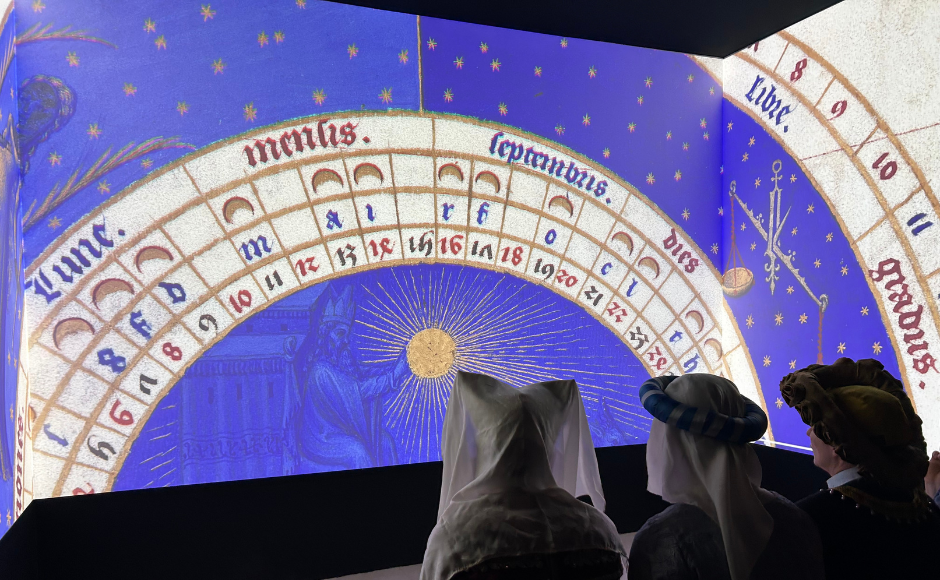
Projection in the exhibition, June 2025 © Château de Chantilly
This support is part of the Fondation Etrillard's mission to rediscover the Middle Ages, which it pursues in various fields of art, craftsmanship and the humanities, both in Switzerland and France.
Some of the Foundation's patronage projects related to the Middle Ages:
- Exhibitions (Illuminated manuscripts from Switzerland at the Fondation Martin Bodmer, Figures of the fool at the Louvre Museum, Charles VII at the Cluny Museum)
- Restoration (illuminated manuscript from the Abbey of Solesmes, reliquaries from the Treasury of the Abbey of Saint-Maurice)
- Music (Philippe de Vitry symposium with the Haute Ecole de Musique (HEM) in Geneva, Chanter l'Ars Nova programme with the Abbey and Foundation of Royaumont)